The Order of the Garter and Queen Elizabeth: part 3
As the official public record since 1665, The Gazette has been recording appointments to the Order of the Garter for over three centuries. Part three in a four-part series, British honours expert Russell Malloch looks at the relationship between Queen Elizabeth II and the Most Noble Order of the Garter.

Accession
When Queen Elizabeth II came to the throne in February 1952 (Gazette issue 39467) the Garter’s roll included the knights who had been named since control of the order shifted from Downing Street to Buckingham Palace in 1946, together with members from the order’s political past, a legacy that lasted until the death of the final pre-1946 knight, the Duke of Beaufort, in 1984.
The Queen inherited an order with a royal contingent of five, consisting of her husband, mother and grandmother and two of her uncles, the dukes of Gloucester and Windsor, together with 22 ordinary and six foreign knights.
On her first birthday as sovereign the Queen followed the example set by her father and grandfather who admitted their consorts to the Garter on their same birthdays in 1936 and 1910, but as the Duke of Edinburgh had already received the Blue Riband he was invested with the insignia of a knight of the Thistle at Windsor Castle on 21 April 1952.
The Queen began to fill the vacant stalls in St George’s Chapel by nominating her maternal uncle William Leveson-Gower, Earl Granville, who joined the order on 5 December 1952 (Gazette issue 39711), a few days after he retired as the governor of Northern Ireland.
Granville’s appointment demonstrated the continuing presence of the family links that developed within the Garter over several generations, as the earl’s grandfather had helped to invest Charles X of France with the order’s insignia at Paris in June 1825 (Gazette issue 18146), while it was a remarkable fact that Granville’s father had received the Blue Riband almost a century earlier, as he was invested in July 1857, towards the start of a long political career (Gazette issue 22019).
Over the next 70 years the Queen nominated a further 111 members to the Garter, and showed a degree of restraint in altering the scope of the order, which she operated with a Christian spirit that had largely disappeared from the organisation by the end of the 19th century, but was then emphasised by her father after he gained effective control of the order after the war.
Apart from the royal knights and ladies, the ordinary members of the Queen’s reign can be grouped into several broad categories that are dealt with below, and reflect the main changes that were introduced by the Queen, including:
- a reduction in the number of ordinary knights from 25 to 24
- the admission of Commonwealth citizens and English judges
- the appointment of ladies as ordinary members
The role of the Garter was discussed during the course of the reign, but the Queen and her advisers were not persuaded to adopt any suggestions for material change, including some that emerged when the House of Commons examined the role of the British honours system in 2004, for example by restricting the Garter to foreign heads of state, or placing it on a statutory basis, or removing the religious dimension that involved the taking of oaths and limited the scope of the highest order in the land.
There was certainly an early departure from precedent in 1953 when the Queen decided not to appoint any additional knights to mark her coronation, in contrast to what had happened for the crowning of Edward and Alexandra in 1902, George and Mary in 1911, and George and Elizabeth in 1937 when one of the additional knights was the Queen’s maternal grandfather, the Earl of Strathmore.
One long-standing link between the Garter and the coronation ritual was maintained, as four of the knights were given the task of holding the canopy of cloth of gold over the Queen when she was anointed on 2 June 1953 (Gazette issue 40020). The Queen’s procession also retained a place for the officers of the orders of knighthood, when the Garter was represented by the chancellor (the Earl of Halifax) and the register (Eric Hamilton, dean of Windsor).
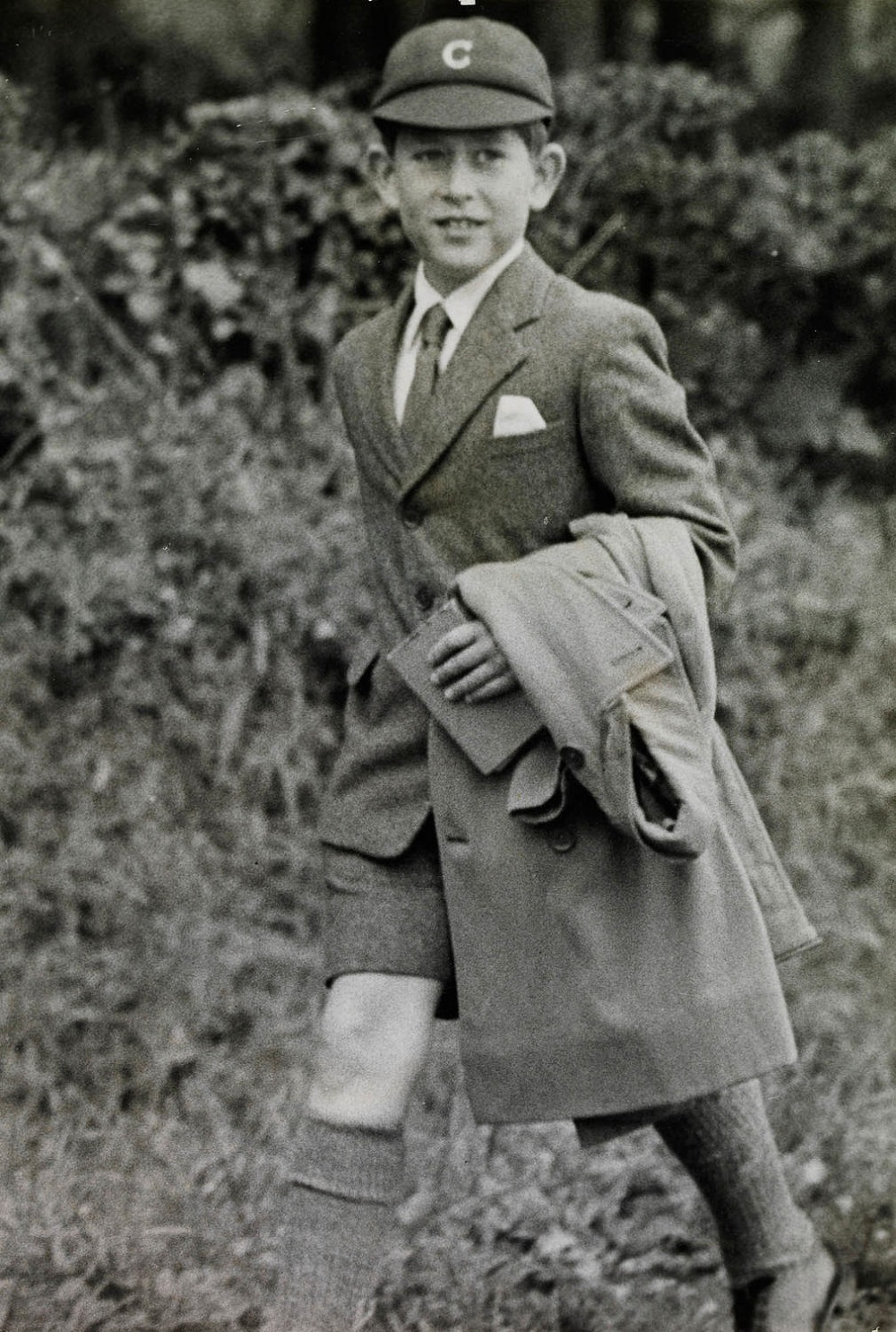
Royal
One of the earliest Garter statutes the Queen issued was dated 5 October 1954 and confirmed the structure of the order, by declaring that it:
“shall henceforth consist of the sovereign and twenty-five knights companions, together with such lineal descendants of our royal predecessor, King George the First, as shall have been elected or appointed or may hereafter be appointed into the same (always excepting the Prince of Wales, who is a constituent part of the original institution), and such stranger knights as have been admitted or may hereafter be admitted to the said Most Noble Order.”
No admissions were made under the “lineal descendants” provision for almost 30 years, and the first royal knight of the reign fell under the Prince of Wales exception, as the Queen conferred that dignity on her son Charles, Duke of Cornwall, in July 1958 (Gazette issue 41460). He was nine years old, but was far from the youngest knight in the order’s history, as the Prince of Orange – later King William III – was only two when he was nominated in the 1650s.
The Prince of Wales remained without his garter for almost a decade, but was eventually knighted and invested on 17 June 1968, and installed in St George’s Chapel, where he established a connection with the order as president of the Society of Friends of St George’s and the Descendants of the Knights of the Garter, an organisation whose main aim had been to assist the dean and canons of Windsor in maintaining the fabric of the chapel.
The society was formed in 1931, largely through the efforts of Albert Baillie, the dean of Windsor (and register of the Garter), and three years later King George V became its patron. Following the post-war changes in control of the order, the Duke of Gloucester assumed the office of president, and the knights were all enrolled as vice presidents. The Prince of Wales succeeded his uncle as president in 1974, and still held that position by 2006 when the old structure gave way to the Foundation of the College of St George, which had a more religious focus.
The Queen granted no more royal ribands until 1985, when she admitted her cousin Edward, Duke of Kent, and after that she presented the Blue Riband to her younger children, starting with the Princess Royal in 1994, and then the Duke of York and the Earl of Wessex in 2006.
The Queen’s sister never joined the Garter, but instead Princess Margaret received the Royal Victorian Chain, a special award that was created by Edward VII and indicated what was described officially as “a mark of the highest distinction and special favour on the part of the sovereign.” The Queen limited its use for family purposes to her sister, who was given the Chain at Balmoral Castle in 1990 as a 60th birthday present, and to her husband Philip, who was invested in 2007 on the 60th anniversary of their wedding.
The Garter was conferred on two more of the Queen’s cousins, with the nomination of the Duke of Gloucester in 1997 and Princess Alexandra in 2003. More recently the insignia was presented to Prince William of Wales, later Duke of Cambridge, who was knighted and invested by his grandmother at Buckingham Palace on 5 May 2008, while the Duchess of Cornwall (now the Queen Consort) was presented with her blue riband in June 2022 at what would prove to be the last Garter chapter of the reign.
Political
Although responsibility for nominating members of the two highest ranking orders had passed from Downing Street to Buckingham Palace under the Attlee agreement of 1946, the Queen continued to mark political services with the Blue Riband and did so for the first time shortly before her coronation.
The earliest political nominee was Winston Churchill (Gazette issue 39838), who had succeeded Attlee as prime minister in October 1951, having refused the offer of the Garter in 1945 after the end of the war in Europe, although he accepted the badge of the Order of Merit in 1946 to mark his role as prime minister during the conflict, just as David Lloyd George had done after the end of the last war.
Like Lord Granville, the first of the Queen’s knights, Sir Winston Churchill had many family links with the Garter, which was held by his grandfather and several of his Marlborough ancestors. He was invested at Windsor Castle on 24 April 1953 and wore his Garter mantle at the coronation a few weeks later with a jewelled collar badge that had belonged to the Duke of Wellington.
Churchill was not installed in 1953, as the order’s ceremonial was suspended during the year of the coronation, and instead he was placed in his stall during the following year, when the Queen continued her father’s practice of holding two investitures. This saw Winston Churchill attending the private ceremony in April 1953 when he was knighted and received part of the insignia, including the star and Lesser George, and then being invited to a chapter, which was held in the Throne Room in Windsor Castle on 14 June 1954, when he was given the complete insignia, and then installed later the same day.
The two-part investiture and installation process was used through the next seven decades, but the system only applied in the Garter, while the other orders of knighthood operated a single investiture. In the case of the Thistle, for example, there was no return to the style of chapter that was last held for the Scottish noblemen in December 1860, but was then allowed to lapse after the death of the Prince Consort, and was not restored even after 1911 when the knights began to gather in Edinburgh to be installed in St Giles’ Cathedral.
The Garter’s two-part investiture was used for the last knight of the reign, as Tony Blair – who served as prime minister from 1997 to 2007 – was knighted and presented with part of his insignia on 10 June 2022, and then received the complete habits of the order at a chapter on 13 June, after which he was conducted to his stall in St George’s Chapel.
The Throne Room at Windsor was the venue for all of the Garter chapters of the Queen’s reign, except between 1994 and 1997, when the Queen’s Ballroom was used. The change of location was made in response to the fire that broke out at Windsor Castle towards the end of 1992 (the Queen’s annus horribilis), when one of the casualties was the roof of St George’s Hall with its heraldic display relating to the past knights of the Garter.
Six prime ministers accepted the Queen’s offer of the Blue Riband between the Churchill and Blair investitures, and this led to the appointment of Clement Attlee in 1956, followed by Harold Wilson in 1976, and then James Callaghan in 1987, Edward Heath in 1992, Margaret Thatcher in 1995, and finally John Major in 2005. The roll of prime ministerial knights also includes Anthony Eden who received his mark of royal favour in 1954 while he was foreign secretary, and less than a year before he took over from Churchill at Downing Street.
Two prime ministers who served before the end of the Blair administration did not join the Garter, as Alec Douglas-Home’s Scottish ancestry saw him being offered the green riband of the Thistle in 1962 when he was foreign secretary (and still Earl of Home), while Harold Macmillan joined the more exclusive Order of Merit in 1976, several years after he left Downing Street.
A number of other politicians were noticed by the Queen, as the recipients of the Blue Riband included Viscount Brookeborough, the prime minister of Northern Ireland, in 1963; together with first lords of the Admiralty, the Earl Alexander of Hillsborough in 1964 and the Earl of Longford in 1971; chancellors of the Exchequer such as Viscount Amory in 1968 and Lord Butler of Saffron Walden in 1971; and Lord Carrington, the foreign secretary and secretary-general of the North Atlantic Treaty Organisation in 1985.
The Queen also granted the dignity to Lord Shackleton, the son of the polar explorer Sir Ernest Shackleton, who was leader of the House of Lords for a period and later chaired the Political Honours Scrutiny Committee, which was established in the 1920s to monitor the award of honours by the government, but did not extend to the use of the Garter.
The political dimension was still evident by 2022, as the last two members of the Queen’s reign were Lady Amos, who had served as leader of the House of Lords and lord president of the Council, and her Labour colleague Tony Blair (Gazette issue 63581).
Lieutenants
More than 20 of the Queen’s nominees served as a lord lieutenant, and the Garter became a favoured form of honour for her local representatives, except those in Scotland.
The English lieutenants who fall into this group began with Lord Middleton who assisted the Queen in East Yorkshire and joined the order in 1957, while later companions include Lord Digby of Dorset in 1960, Sir Edmund Bacon of Norfolk in 1970, and Viscount Leverhulme of Cheshire in 1988.
One of the Gartered lieutenants was the Duke of Northumberland, whose father had worn the blue riband in the 1920s. He received the honour in 1959 at the age of 45 years, making him the youngest ordinary companion of the reign, while the average age of the Queen’s candidates was 68.
One notable candidate in this category was Lavinia, Duchess of Norfolk who became the first woman outside the royal family to enter the Garter, which she did in April 1990 (Gazette issue 52120). She was the lieutenant of West Sussex and widow of the duke who was the earl marshal of England, and the senior ordinary knight of the Garter by the time of his death in 1975.
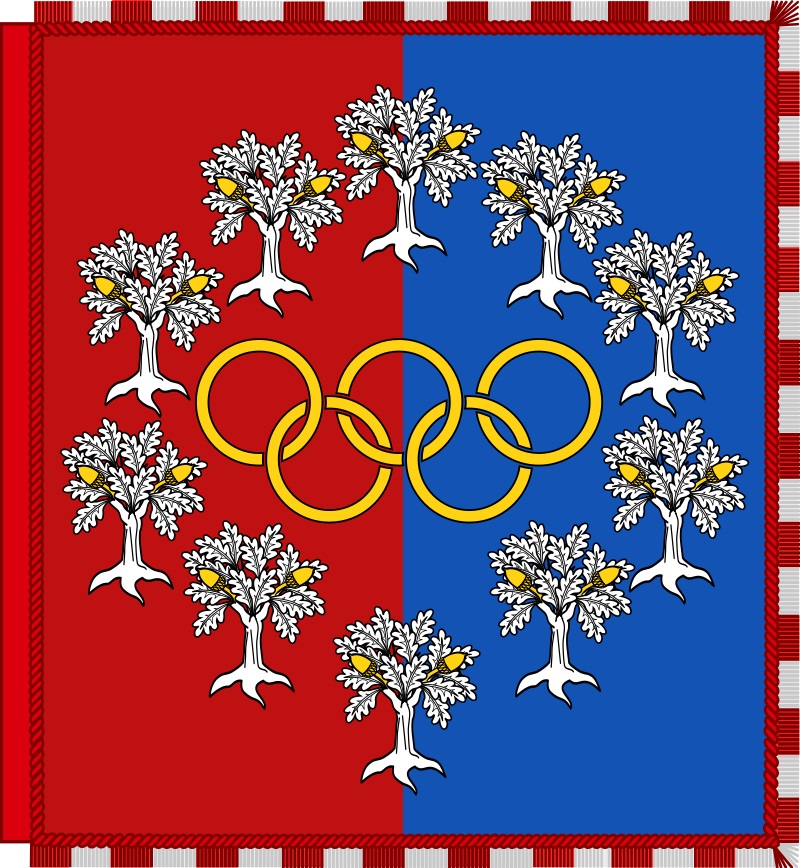
The lieutenants who followed the Duchess of Norfolk into the order were Dame Mary Fagan of Hampshire who joined in 2018, and Dame Mary Peters who received the Blue Riband in 2019 after a term as the lord lieutenant of Belfast that followed a distinguished career in sport, which was reflected in St George’s Chapel in the Olympic rings that featured in her Garter banner.
The Welsh ribands began with Sir Cennydd Traherne of Glamorgan in 1970, who was followed in 1999 by Sir William Gladstone, the great-grandson of the prime minister of the same name, who declined several offers of honours, and ended his long political career as plain Mr Gladstone in 1894 when he was engaged in a bitter dispute with Queen Victoria over his choice of a candidate for the Garter.
The Garter sometimes followed an earlier award for services as a lord lieutenant, as in the case of Sir Thomas Dunne of Hereford who gained a place at the knight commander level in the Victorian Order in 1994 and the Garter in 2008, and Mary Fagan who received the same level of recognition (DCVO) almost a decade before she received the Blue Riband. There was, however, no uniform policy as to recognising this form of royal and public service, and some of the Queen’s lieutenants went unnoticed, or ended their career with a lower ranking place in the Victorian Order.
Armed forces
The Garter was seldom used for senior personnel from the armed forces before 1946, when the King honoured war-time leaders such as Alanbrooke, Montgomery and Mountbatten. There were a couple of precedents, as with Wellington’s riband in 1813 for services against Napoleon, then Lord Roberts in 1901 while the Boer War was still in progress, and Earl Kitchener of Khartoum during the early part of first world war, but these were exceptions to the general rule.
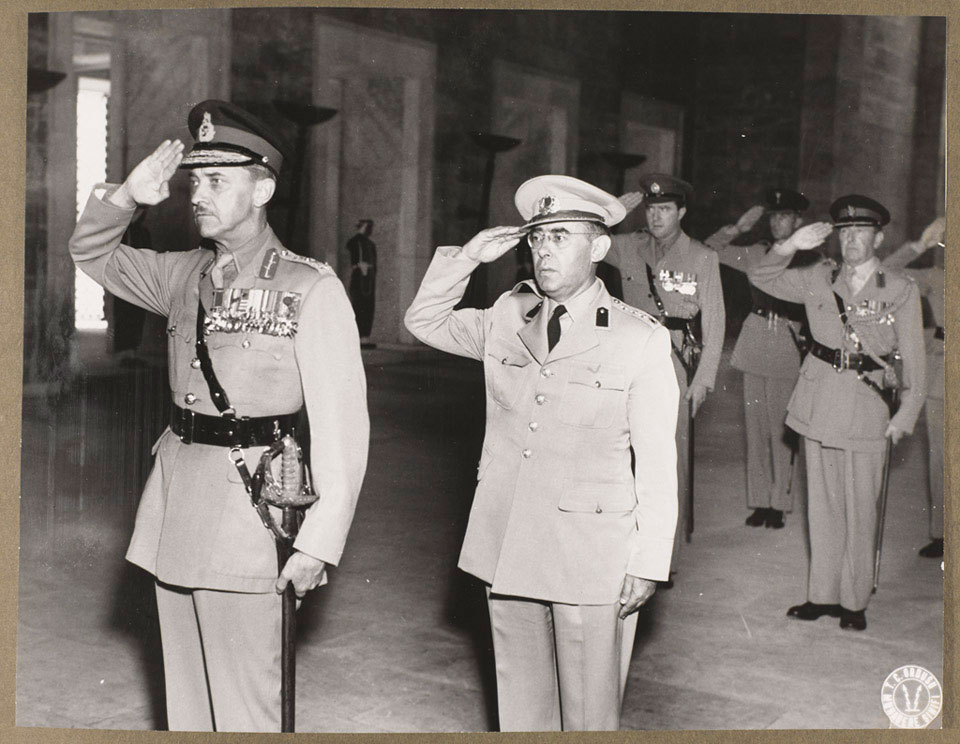
The armed forces contingent was strengthened during the Queen’s reign, as in September 1963 when she appointed Field Marshal Sir Gerald Templer, a former chief of the Imperial General Staff and head of the British army (Gazette issue 43108). Templer’s nomination was notable in the annals of the order, as it was the last time the number of ordinary companions stood at its statutory maximum of 25, and since the death of the next knight (Lord Cranworth in January 1964) the maximum has never exceeded 24.
The Queen subsequently admitted seven officers who served as chief of the Defence Staff, the person with overall responsibility for operating the armed forces, all of whom had previously earned the grand cross of the Order of the Bath. The sequence began with Marshal of the Royal Air Force Lord Elworthy in 1977, who was followed by one more flying knight, Air Chief Marshal Lord Stirrup, in 2013, while the army’s recipients consisted of Field Marshals Sir Richard Hull in 1980, Lord Bramall in 1990 and Lord Inge in 2003, and two naval chiefs, Admiral of the Fleet Lord Lewin in 1983 and Admiral Lord Boyce in 2011.
As with all of the Garter nominations, and with the notable exception of the Prince of Wales, there was no automatic link between the grant of a Blue Riband and tenure of a particular position – in this case chief of the Defence Staff – and not all of Lord Boyce’s colleagues who headed the armed forces secured that special mark of favour, while one of the chiefs – Marshal of the Royal Air Force Lord Cameron of Balhousie – was given the Thistle because of his Scottish ancestry.
Governors
Another discreet group of knights were the Queen’s representatives in her various realms, some of whom were treated as ordinary rather than stranger knights, even if they were not citizens of the United Kingdom.
The Queen’s first nominee in this group was Lord Granville who was noticed after completing his term as governor of Northern Ireland in 1952, while his successor in that office, Lord Wakehurst, joined the Garter ten years later.
The Garter welcomed a number of governors-general of Australia and New Zealand, but the distinction was never conferred on the Queen’s representative in Canada, where there was a long-standing policy of rejecting awards that involved titles. And so, the Victorian Chain was used instead in 1960 after the Canadian government objected to the Blue Riband being conferred on Vincent Massey as it would engage the prefix “Sir”. Roland Michener was also given the Chain rather than the Garter when he retired as governor-general in 1973.
The Australian element began in 1959 with the appointment of Field-Marshal Sir William Slim (Gazette issue 41691), whose distinguished career during the war was followed with a term as chief of the Imperial General Staff before he went to Canberra. Four of Slim’s successors as governor-general joined the Garter:
- Viscount De L’Isle, one of only two holders of the Victoria Cross to wear the garter, in 1968
- Lord Casey, a former governor of Bombay, Australian minister for external affairs and the first Australian born governor-general, in 1969
- Sir Paul Hasluck in 1979
- Sir Ninian Stephen, a former justice of the High Court of Australia, in 1994
Two of New Zealand’s governors-general were admitted to this select group of Commonwealth knights: Viscount Cobham, a British peer and future lord steward and chancellor of the Garter, in 1964, and Sir Keith Holyoake, a former prime minister of New Zealand, in 1980.
Each of the Australian and New Zealand awards came after the grant of other honours connected with the office of governor-general, as Lords Casey and Cobham had received the grand cross of the Order of St Michael and St George before the Blue Riband, as had De L’Isle, Hasluck, Slim and Stephen, who earned the grand cross of the Victorian Order for their work during royal visits and some years before they gained their stalls at Windsor.
The realms of Australia, Canada and New Zealand began to establish their own national honours systems from the 1960s and took steps to enhance them during the latter part of the Queen’s reign, and no Commonwealth members joined the Garter after Ninian Stephen in 1994.
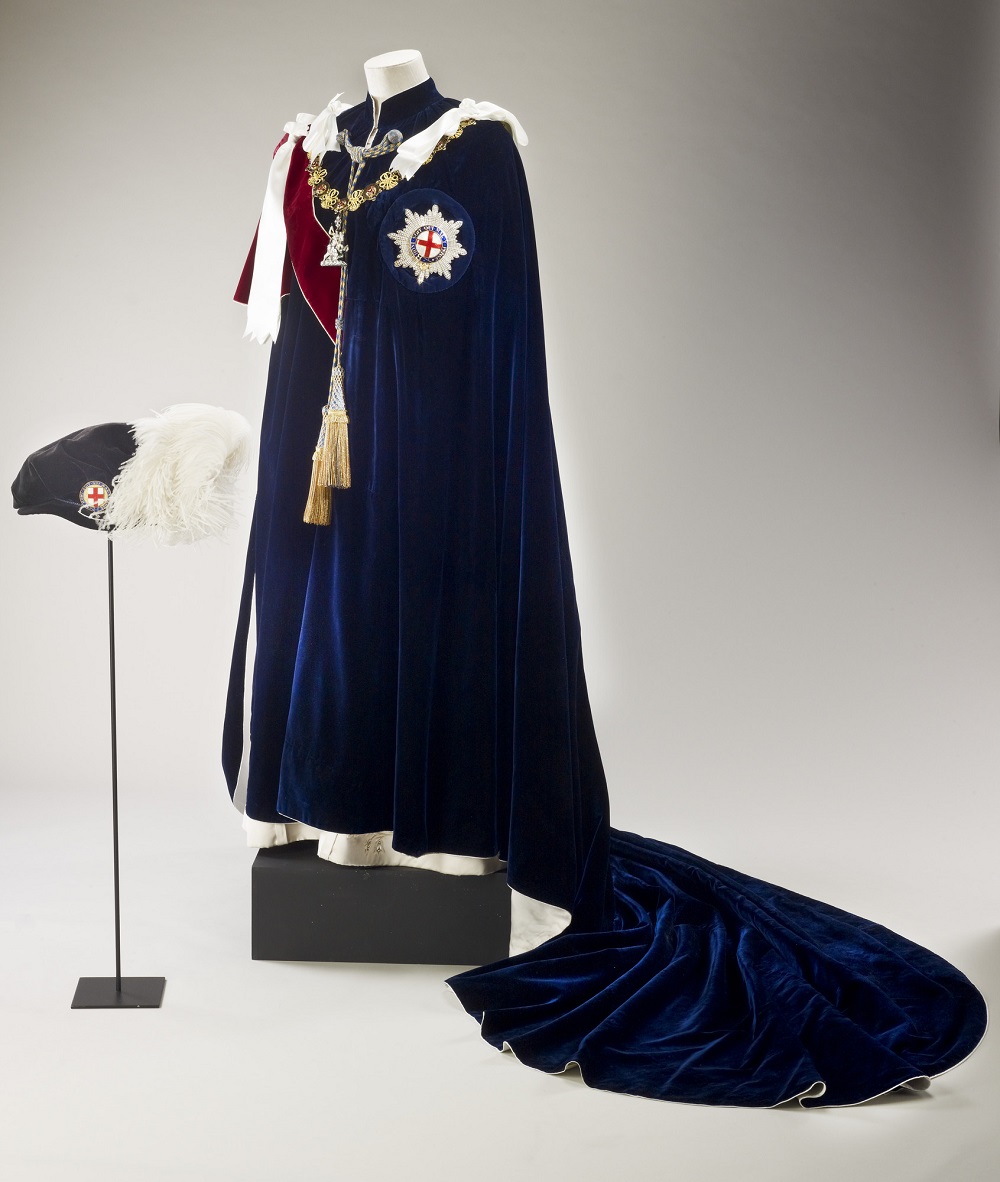
Royal household
A few senior officials who managed aspects of the royal estates and households joined the order, with the 1960 Garter for the Earl of Radnor who, as lord warden of the Stannaries, had a role in the affairs of the duchy of Cornwall, followed by the Duke of Norfolk, the earl marshal of England and head of the College of Arms, in 1983, and then Viscount Ridley, the lord steward who was responsible for the Queen’s “below stairs” employees in 1992.
Two of the Queen’s chamberlains who led the “above stairs” staff were also honoured, Lord Cobbold in 1970 and Lord Luce in 2008, while other holders of that important position were given the Victorian Chain when they retired, most recently in April 2021 when the Earl Peel was favoured in that way. The Queen also used the Chain for two chamberlains who already held the Garter, as the Earl of Clarendon added the Chain to his Blue Riband in October 1952, while the Earl of Scarbrough gained the same distinction when he left office in January 1963.
Bank of England
The Queen allocated stalls at Windsor to five of the nine governors who managed the Bank of England during her reign.
Two of those governors, Lord Cobbold and the Earl of Cromer, entered the Garter some years after they left the Bank of England, Cobbold having served in the intervening period as lord chamberlain and Cromer as ambassador to the United States of America. They were joined in 1983 by the bank’s Lord Richardson of Duntisbourne, and then by Lord Kingsdown (Robin Leigh-Pemberton) in 1994 and lastly by Lord King of Lothbury in 2014.
As with the post of chief of the Defence Staff, the Garter was not an automatic reward for the bank’s governor, and two holders of that office were granted other high-ranking honours as part of the routine bi-annual New Year and birthday award process, with the grand cross of the Order of the British Empire being conferred on Leslie O’Brien in 1967 and Edward George in 2000.
In common with his companions, Lord King’s banner appeared in St George’s Chapel where it showed the Bank of England as part of his coat of arms. His stall was the nearest to the altar on the south side of the choir, and so it was his heraldic display, together with the blue dolphins on Lord Boyce’s banner on the north side, that featured prominently in images from the Queen’s committal service in September 2022.
Judiciary
The Queen opened the order to a few senior judges, and so exposed it to a role that it had not normally performed before the start of the 21st century, although she had given the Garter to Lord Hailsham of St Marylebone in 1988 after he had served two terms as lord chancellor, but this was essentially in recognition of his political rather than his judicial work.
The judges in the senior courts in England stood in an unusual position as regards the award of ribands, as the reforms to the honours system that were announced by John Major in Parliament in March 1993 specifically excluded any change to the grant of dignities to the justices of the High Court, as the prime minister said that they should “continue to receive the traditional honour of a knighthood on appointment” as the practice “has preserved the independence of the Bench from the exercise of patronage for two centuries.”1
There were no recent or relevant precedents of any judge joining one of the high orders of knighthood, and so it was notable, especially in the light of what the prime minister had said in the House of Commons in 1993 about independence and patronage, that the Queen invited Lord Bingham of Cornhill to join the Garter in 2005 while he was still the senior lord of appeal in ordinary in the House of Lords (Gazette issue 57622).
A second judicial riband followed in 2011, with the appointment of Lord Phillips of Worth Matravers, Bingham’s successor as the senior lord of appeal, and the first president of the Supreme Court, an office he continued to fill when he was invested with the blue riband.
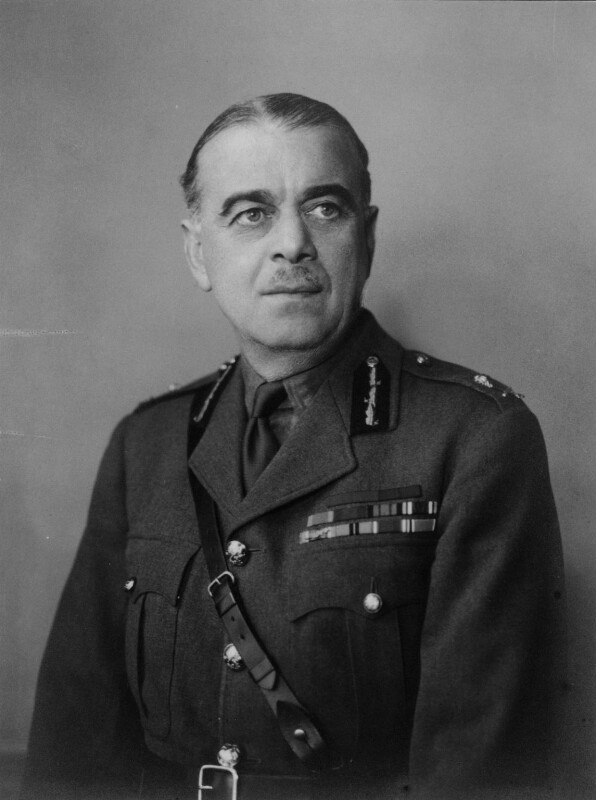
Others
The Queen conferred the Blue Riband on a number of individuals whose careers do not fit easily into one of the broad categories mentioned earlier.
The earliest member in this group was General Lord Ismay, who joined the Garter in 1957, having had a career that covered a wide range of areas of public service, as he was chief of staff to Winston Churchill while he was minister of defence through the war, as well as serving as chairman of the 1951 Festival of Britain council, secretary of state for Commonwealth Relations, and secretary-general of NATO.
The work of the Civil Service was seldom noticed with the Garter, although in 1965 the Queen conferred the honour on Lord Bridges (son of the poet laureate Robert Bridges), who served as the secretary to the Cabinet during the war, and later chaired the Royal Fine Art Commission and the British Council.
One other Garter for public service arose with the nomination of Lady Manningham-Buller in 2014, some years after she received the more conventional award of dame commander of the Order of the Bath to reward her time as director-general of the Security Service.
Two knights were part of the team that succeeded in reaching the summit of Mount Everest shortly before the coronation, starting in 1979 when the Queen delivered the Garter to the leader of the expedition, Lord Hunt, having given him her Coronation Medal in July 1953 when he went to Buckingham Palace to be knighted on his return from Everest.
On the same day in 1953 the Queen invested New Zealand’s Edmund Hillary as a knight commander of the Order of the British Empire for his mountaineering work. Sir Edmund was the only holder of the Blue Riband of the reign to come from the Commonwealth apart from governors-general Casey, Hasluck and Stephen of Australia, and Holyoake of New Zealand, and he was installed in St George’s Chapel in 1995 where his banner displayed prayer wheels set among chevrons that represented mountain peaks, while his crest was a kiwi wielding an ice axe.
Four knights held no major public office at the time they joined the Garter, but all held senior peerages and had historic family connections with the order: the Earl Waldegrave in 1971, and the dukes of Grafton, Wellington and Westminster in 1976, 1990 and 2003.
Wellington’s ancestor had earned his Garter for military services, while the most recent Grafton nomination – which was gazetted at the same time as the Labour prime minister Harold Wilson in 1976 – showed the continuity that existed within the order, as five of the duke’s ancestors had featured in The Gazette’s record of knights since the 17th century, starting with King Charles II’s son Henry FitzRoy who was elected at a chapter at Windsor in August 1680 (Gazette issue 1543).
The ducal ribands provide a reminder that the selection of recipients of this high honour presented difficulties to the Queen and her advisers, given the need to maintain the quality of the companions, and so protect the Garter and its institutions from public criticism. Writing in 1963, an editor of Debrett hinted at some of the issues that might arise, as he noted that the non-royal knights were “very diversified, including as they do politicians, famous war-time leaders, and members of ancient noble families, some of whom do not appear to have rendered any outstanding services” (Hankinson, 1963, p107).2
That assessment of the knights was confirmed by comparing the 1963 roll of recipients of the Garter with that of the Order of Merit, which was also within the Queen’s gift, as the holders of the OM who were contemporaries of, say, the Duke of Northumberland included Nobel laureates such as Lord Adrian, Sir Robert Robinson and the philosopher Bertrand Russell.
The span of the decades saw further family links being created, as with the Blue Ribands that were given to Winston Churchill in 1953 and his daughter Mary Soames in 2005 when, at the age of 82, she became the oldest candidate of the reign. There were even examples of a son delivering up his father’s insignia and then meeting the Queen some years later to accept his own garter, as happened with the Duke of Wellington who delivered his father’s insignia in May 1972, and returned to Buckingham Palace 22 years later to collect his own badge and star.
Foreign
The Queen appointed 15 foreign members, who were referred to in the Garter’s 1954 statute by the quaint title of “stranger knights”. She also re-appointed one of the companions whose banner had been removed during wartime.
The foreign blue ribands were mainly employed as part of the exchange of gifts during state visits, although King Olav of Norway was invested at the start of a private visit in May 1959 when he went to Yorkshire to unveil his father’s memorial as colonel-in-chief of the Green Howards, while Queen Beatrix of the Netherlands received the Blue Riband in June 1989 when she attended a service of thanksgiving at the Dutch Church in London to mark the close of the William and Mary Tercentenary Celebrations.
The Garter often supplemented a Victorian Chain that was presented during an earlier visit. Nine of the Queen’s foreign nominees received the Chain before the Garter, including double awards for Emperor Haile Selassie of Ethiopia, Queens Juliana and Beatrix of the Netherlands, Kings Olav and Harald of Norway, King Juan Carlos of Spain, and Kings Gustaf Adolf and Carl Gustaf of Sweden.
Queen Elizabeth received the insignia of many foreign orders in return. In October 1954, for example, she was given the chain of the Order of the Seal of Solomon by Emperor Haile Selassie when he came to London, and one of the last exchange awards was the collar of the Order of the Golden Fleece the Queen received from the King of Spain in Madrid in October 1988.
The recipients of the double awards also included the Queen of Denmark who was given the Chain in 1974 and the Blue Riband five years later and became the longest serving member of the Garter when the Prince of Wales succeeded to the crown in September 2022. The place of the senior member of the order has been held by the following companions since 1952:
- 1952-57 Haakon, King of Norway
- 1957-74 Henry, Duke of Gloucester
- 1974-83 Leopold, ex King of the Belgians
- 1983-2002 Elizabeth, the Queen Mother
- 2002-21 Philip, Duke of Edinburgh
- 2021-22 Charles, Prince of Wales
- 2022- Margrethe, Queen of Denmark
King Carl Gustaf ’s honours illustrate the way in which the exchange process operated, as he received the Chain in July 1975 when he paid a state visit to Edinburgh, and Queen Elizabeth was presented with the collar of the Order of the Seraphim (to supplement the insignia of the same order she received shortly after the coronation in 1953). The king was then invested with the Garter in May 1983 in Stockholm during the return visit, and he wore both the Chain and his blue riband at the Queen’s state funeral in Westminster Abbey in September 2022.
The Order of the Thistle was never used for royal visitors, with the exception of
the award to King Olav of Norway, who already held the Garter and the Chain when he
met the Queen at the Palace of Holyroodhouse in October 1962 and so was installed
as a knight of the Thistle in St Giles’ Cathedral.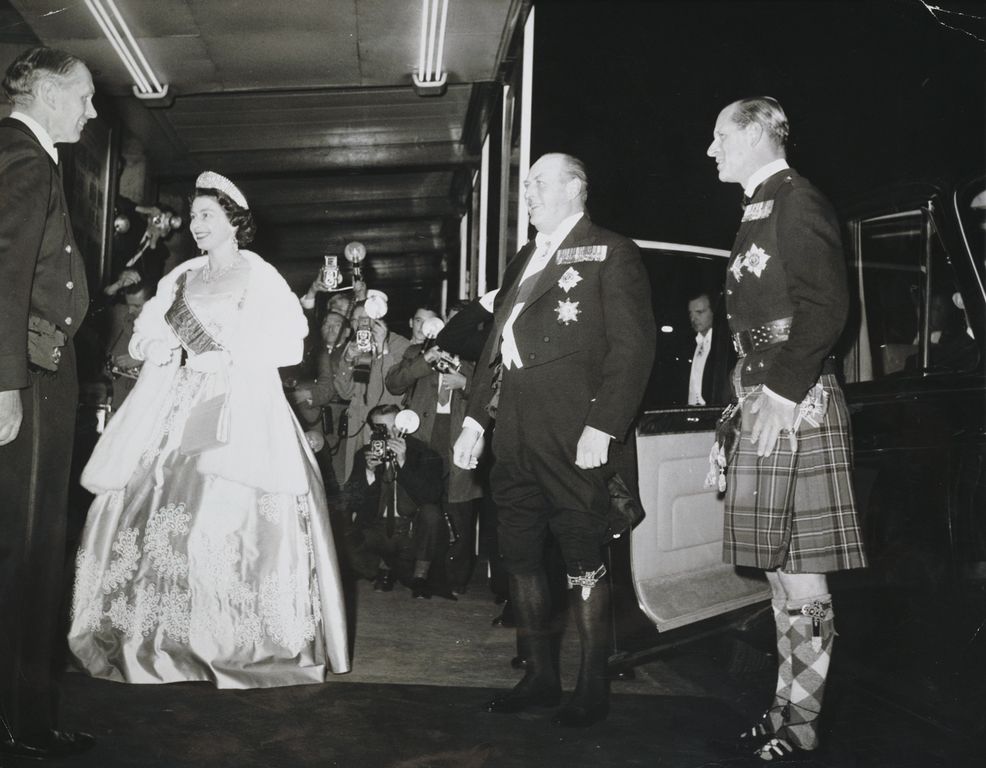
King Olav was one of the foreign companions whose nomination fell within both the stranger and lineal descendant provisions of the order’s 1954 statute, as did those of Kings Carl Gustaf of Sweden, Harald of Norway and Juan Carlos of Spain, and Queens Juliana and Beatrix of the Netherlands.
The double award was not universal, and the Queen conferred the Blue Riband without any preliminary Victorian Chain for the first time in May 1963 when she admitted Baudouin of the Belgians, and then Paul of the Hellenes in July of the same year, and the Grand Duke of Luxembourg in June 1972. A similar approach was adopted with the final two stranger knights of the reign, Philip of Spain in July 2017 and William Alexander of the Netherlands in October 2018.
The exchange of courtly gifts could lead to difficulties, as the Garter learned during the course of the two great wars of the 20th century, and in particular because of the conflicts with Germany, Italy and Japan. The Japanese emperors Mutsuhito and Yoshihito had been welcomed into the order, and the Duke of Gloucester carried the Garter to Tokyo for Emperor Hirohito in 1929, but the war led to the Foreign Office notice of February 1942, which explained that:
“The King has given commands for the removal from the lists of honorary members of the British orders of chivalry, and from the rolls of foreign holders of British decorations and medals, of all names appearing therein of persons who are of Bulgarian, Finnish, Hungarian, Japanese, Roumanian or Siamese nationality” (Gazette issue 35471).
Hirohito’s name was struck off the list of Garter knights, and he forfeited his place in two of the other British orders, while the imperial banner was removed from St George’s Chapel, recalling what had happened in May 1915 during the first world war when the flags of the Austrian and German knights were taken down, and more recently in August 1940 when the King of Italy was expelled (Gazette issue 34929).
Despite the terms of the Foreign Office’s notice, no steps were taken to remove King Carol of Roumania, who had received the Garter during a state visit to London in November 1938 but was then forced to abdicate in 1940 and later settled in Portugal where he died in April 1953.
Relations between the warring nations gradually improved, and in November 1961 Emperor Hirohito wore the Garter’s star when Princess Alexandra became the first member of the royal family to visit Japan since the Duke of Gloucester arrived with his Garter mission in 1929. Ten years later the Emperor paid a state visit to the United Kingdom and a new imperial banner was hung in St George’s Chapel, where Hirohito’s son Akihito was able to place his own banner in 1998.
The Queen did not confer the Garter on any republican head of state, and instead the exchange of honours usually involved the use of the grand cross of the Order of the Bath, and an occasional Victorian Chain, as happened with Presidents de Gaulle and Mitterrand of France.
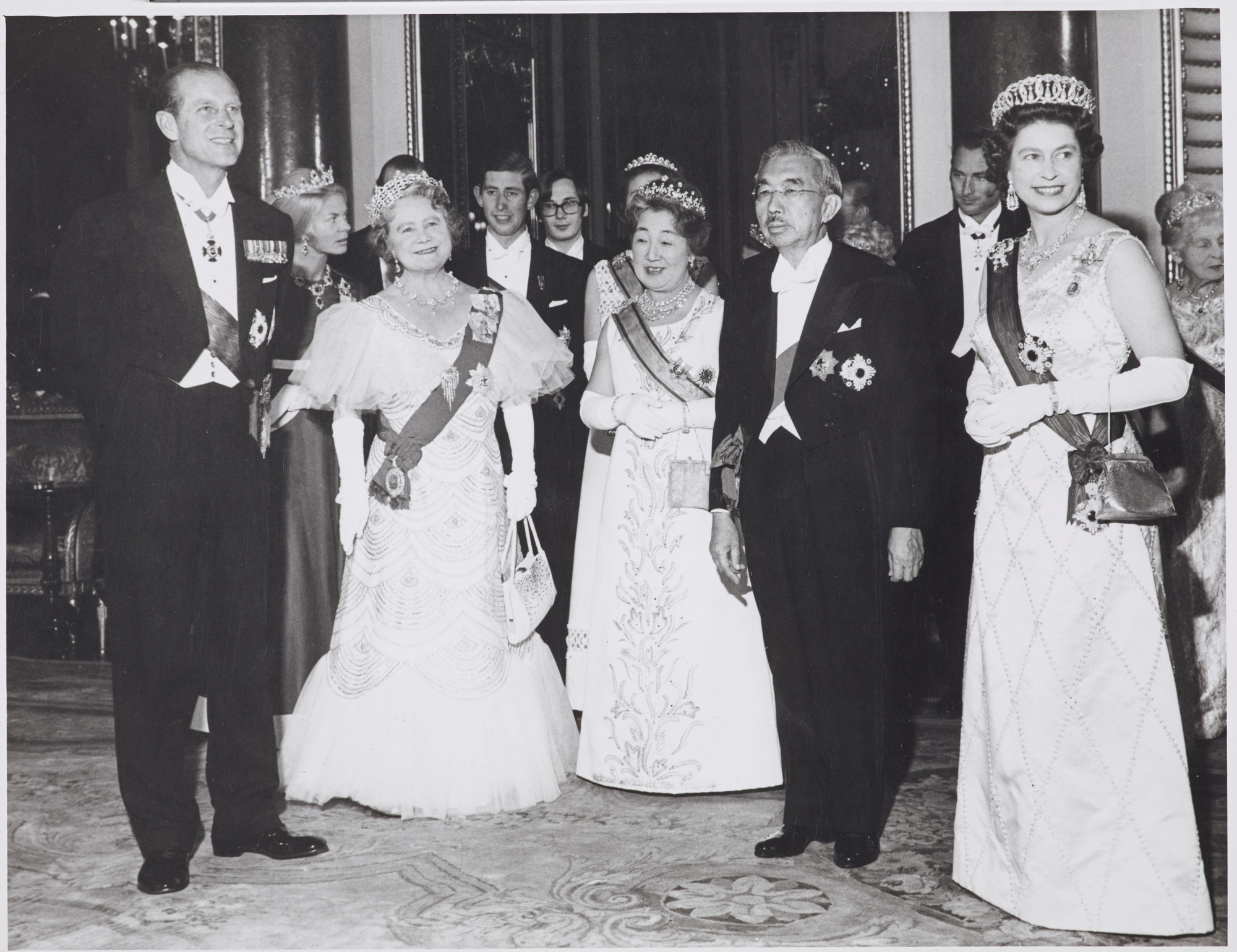
About the author
Russell Malloch is a member of the Orders and Medals Research Society and an authority on British honours.
See also
Queen Elizabeth II - In Memoriam
Images
Royal Collection Trust / © His Majesty King Charles III 2022
Royal Collection Trust / © His Majesty King Charles III 2022
Heralder
Royal Collection Trust / © His Majesty King Charles III 2022
© National Portrait Gallery, London
Royal Collection Trust / © His Majesty King Charles III 2022
Royal Collection Trust / © His Majesty King Charles III 2022
References
- Hansard, House of Commons, 4 March 1993.
- Cyril Hankinson, My Forty Years With Debrett (1963), page 107
Publication date: 14 November 2022
Any opinion expressed in this article is that of the author and the author alone, and does not necessarily represent that of The Gazette.
